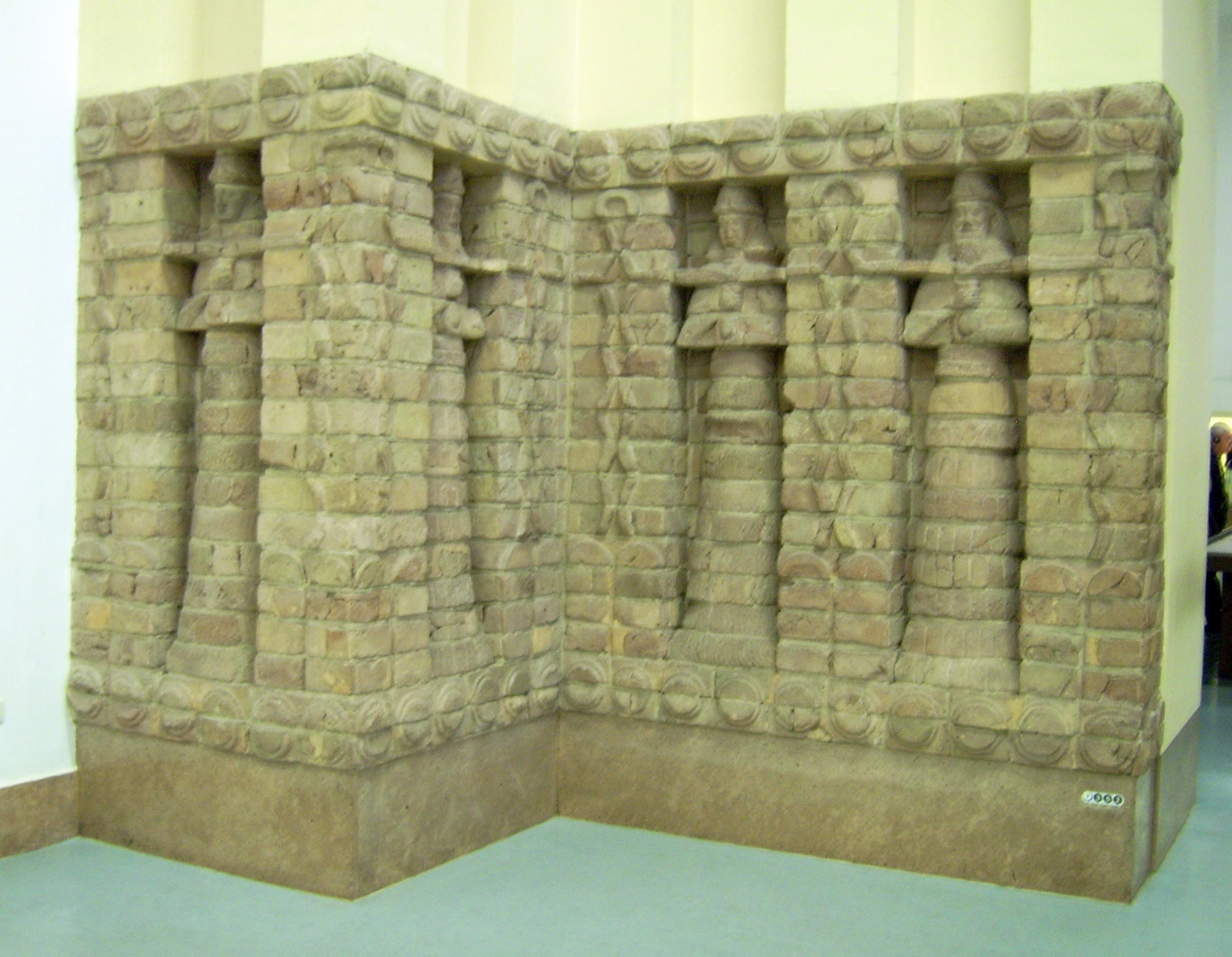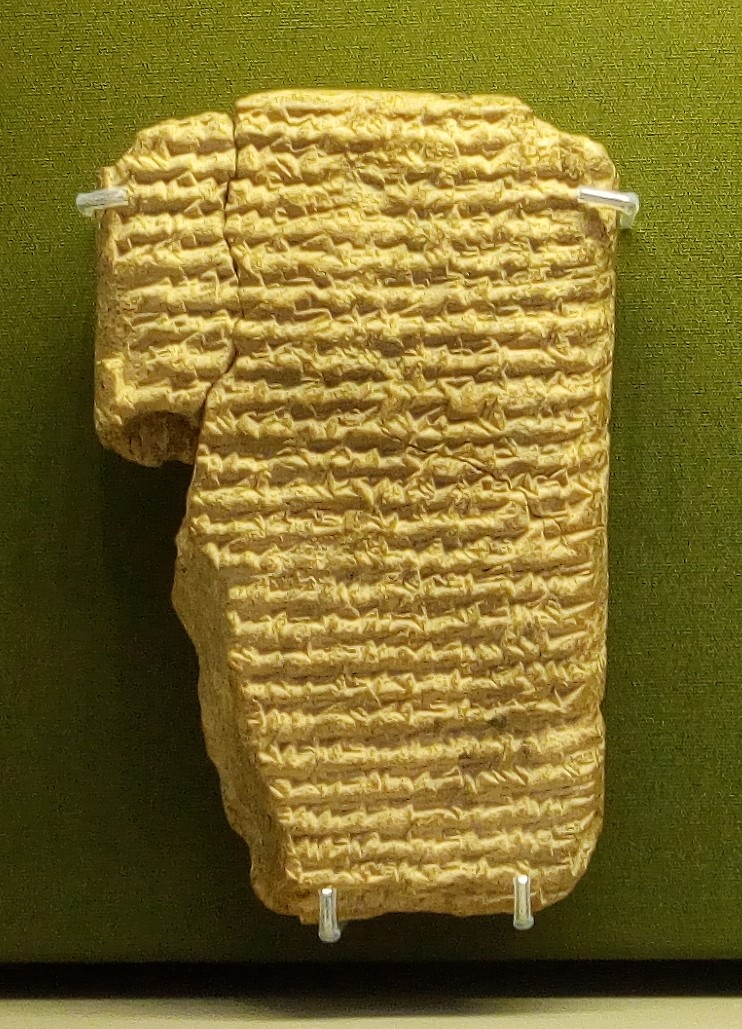|
Nebuchadnezzar (governor Of Uruk)
Nebuchadnezzar ( Babylonian cuneiform: ''Nabû-kudurri-uṣur'', meaning " Nabu, watch over my heir"), also spelled Nebuchadrezzar, and most commonly known under the nickname Kudurru, was a governor of the city Uruk in Babylonia under the rule of Ashurbanipal (669–631 BC) of the Neo-Assyrian Empire, appointed after the defeat of Shamash-shum-ukin of Babylon, Ashurbanipal's brother who had rebelled against Assyria, 648 BC. He was likely the son of the high priest Nabonassar. In the reign of Ashurbanipal's son Sinsharishkun (627–612 BC), the grave of Nebuchadnezzar was desecrated, with the perpetrators going so far as dragging his body through the streets of Uruk. This was done as a response to the anti-Assyrian activities of his two sons. In 2007, Assyriologist Michael Jursa identified Nebuchadnezzar as the father of Nabopolassar, the founder of the Neo-Babylonian Empire, who rebelled against Sinsharishkun in 626 BC (this being the anti-Assyrian activities). If Nabopolassa ... [...More Info...] [...Related Items...] OR: [Wikipedia] [Google] [Baidu] |
Babylonian Cuneiform
Cuneiform is a logo- syllabic writing system that was used to write several languages of the Ancient Near East. The script was in active use from the early Bronze Age until the beginning of the Common Era. Cuneiform scripts are marked by and named for the characteristic wedge-shaped impressions (Latin: ) which form their signs. Cuneiform is the earliest known writing system and was originally developed to write the Sumerian language of southern Mesopotamia (modern Iraq). Over the course of its history, cuneiform was adapted to write a number of languages in addition to Sumerian. Akkadian texts are attested from the 24th century BC onward and make up the bulk of the cuneiform record. Akkadian cuneiform was itself adapted to write the Hittite language in the early second millennium BC. The other languages with significant cuneiform corpora are Eblaite, Elamite, Hurrian, Luwian, and Urartian. The Old Persian and Ugaritic alphabets feature cuneiform-style signs; however, they a ... [...More Info...] [...Related Items...] OR: [Wikipedia] [Google] [Baidu] |
Nebuchadnezzar In Akkadian
Nebuchadnezzar II, also Nebuchadrezzar II, meaning "Nabu, watch over my heir", was the second king of the Neo-Babylonian Empire, ruling from the death of his father Nabopolassar in 605 BC to his own death in 562 BC. Often titled Nebuchadnezzar the Great, he is regarded as the empire's greatest king, famous for his military campaigns in the Levant and their role in Jewish history, and for his construction projects in his capital of Babylon, including the Hanging Gardens of Babylon. Ruling for 43 years, Nebuchadnezzar was the longest-reigning king of the Babylonian dynasty. By the time of his death, he was among the most powerful rulers in the world. Possibly named after Nebuchadnezzar (governor of Uruk), his grandfather of the same name, or after Nebuchadnezzar I ( 1125–1104 BC), one of Babylon's greatest ancient warrior-kings, Nebuchadnezzar II had already secured renown for himself during his father's reign, leading armies in the Medo-Babylonian conquest of the Assyrian Empir ... [...More Info...] [...Related Items...] OR: [Wikipedia] [Google] [Baidu] |
Nabu
Nabu (, ) is the Babylonian patron god of literacy, scribes, wisdom, and the rational arts. He is associated with the classical planet Mercury in Babylonian astronomy. Etymology and meaning The Akkadian means 'announcer' or 'authorised person', derived from the Semitic root or . It is cognate with , , and , all meaning 'prophet'. History Nabu was worshiped by the Babylonians and the Assyrians. Nabu gained prominence among the Babylonians in the 1st millennium BC when he was identified as the son of the god Marduk. Nabu was worshipped in Babylon's sister city Borsippa, from where his statue was taken to Babylon each New Year so that he could pay his respects to his father. Nabu's symbols included a stylus resting on a tablet as well as a simple wedge shape; King Nabonidus, whose name references Nabu, had a royal sceptre topped with Nabu's wedge. Clay tablets with especial calligraphic skill were used as offerings at Nabu's temple. His wife was the Akkadian goddess Tash ... [...More Info...] [...Related Items...] OR: [Wikipedia] [Google] [Baidu] |
Uruk
Uruk, the archeological site known today as Warka, was an ancient city in the Near East, located east of the current bed of the Euphrates River, on an ancient, now-dried channel of the river in Muthanna Governorate, Iraq. The site lies 93 kilometers (58 miles) northwest of ancient Ur, 108 kilometers (67 miles) southeast of ancient Nippur, and 24 kilometers (15 miles) northwest of ancient Larsa. It is east of modern Samawah. Uruk is the type site for the Uruk period. Uruk played a leading role in the early urbanization of Sumer in the mid-4th millennium BC. By the final phase of the Uruk period around 3100 BC, the city may have had 40,000 residents, with 80,000–90,000 people living in its environs, making it the largest urban area in the world at the time. Gilgamesh, according to the chronology presented in the '' Sumerian King List'' (''SKL''), ruled Uruk in the 27th century BC. After the end of the Early Dynastic period, with the rise of the Akkadian Empire, the ci ... [...More Info...] [...Related Items...] OR: [Wikipedia] [Google] [Baidu] |
Babylonia
Babylonia (; , ) was an Ancient history, ancient Akkadian language, Akkadian-speaking state and cultural area based in the city of Babylon in central-southern Mesopotamia (present-day Iraq and parts of Kuwait, Syria and Iran). It emerged as an Akkadian-populated but Amorites, Amorite-ruled state . During the reign of Hammurabi and afterwards, Babylonia was retrospectively called "the country of Akkad" ( in Akkadian), a deliberate archaism in reference to the previous glory of the Akkadian Empire. It was often involved in rivalry with the older ethno-linguistically related state of Assyria in the north of Mesopotamia and Elam to the east in Ancient Iran. Babylonia briefly became the major power in the region after Hammurabi (floruit, fl. –1752 BC middle chronology, or –1654 BC, short chronology timeline, short chronology) created a short-lived empire, succeeding the earlier Akkadian Empire, Third Dynasty of Ur, and Old Assyrian Empire. The Babylonian Empire rapidly fell apar ... [...More Info...] [...Related Items...] OR: [Wikipedia] [Google] [Baidu] |
Ashurbanipal
Ashurbanipal (, meaning " Ashur is the creator of the heir")—or Osnappar ()—was the king of the Neo-Assyrian Empire from 669 BC to his death in 631. He is generally remembered as the last great king of Assyria. Ashurbanipal inherited the throne as the favored heir of his father Esarhaddon; his 38-year reign was among the longest of any Assyrian king. Though sometimes regarded as the apogee of ancient Assyria, his reign also marked the last time Assyrian armies waged war throughout the ancient Near East and the beginning of the end of Assyrian dominion over the region. Esarhaddon selected Ashurbanipal as heir 673. The selection of Ashurbanipal bypassed the elder son Shamash-shum-ukin. Perhaps in order to avoid future rivalry, Esarhaddon designated Shamash-shum-ukin as the heir to Babylonia. The two brothers jointly acceded to their respective thrones after Esarhaddon's death in 669, though Shamash-shum-ukin was relegated to being Ashurbanipal's closely monitored vassal. Mu ... [...More Info...] [...Related Items...] OR: [Wikipedia] [Google] [Baidu] |
Neo-Assyrian Empire
The Neo-Assyrian Empire was the fourth and penultimate stage of ancient Assyrian history. Beginning with the accession of Adad-nirari II in 911 BC, the Neo-Assyrian Empire grew to dominate the ancient Near East and parts of South Caucasus, North Africa and East Mediterranean throughout much of the 9th to 7th centuries BC, becoming the List of largest empires, largest empire in history up to that point. Because of its geopolitical dominance and ideology based in world domination, the Neo-Assyrian Empire has been described as the first world empire in history. It influenced other empires of the ancient world culturally, administratively, and militarily, including the Neo-Babylonian Empire, Neo-Babylonians, the Achaemenid dynasty, Achaemenids, and the Seleucid Empire, Seleucids. At its height, the empire was the strongest military power in the world and ruled over all of Mesopotamia, the Levant and Egypt, as well as parts of Anatolia, Arabian Peninsula, Arabia and modern-day Ir ... [...More Info...] [...Related Items...] OR: [Wikipedia] [Google] [Baidu] |
Nabonassar (7th Century BC)
Nabonassar (Babylonian cuneiform: ''Nabû-nāṣir'', meaning "Nabu (is) protector")J. A. Brinkman (1968). "Nabonassar". ''A political history of post-Kassite Babylonia, 1158-722 B.C''. Analecta Orientalia. pp. 226–235. was a high priest (''šatammu'') of the Eanna temple in Uruk in the reign of the Neo-Assyrian king Esarhaddon (681–669 BC), attested as such from 678 to 675 BC. He is very likely to have been the father of Nebuchadnezzar, governor of Uruk under Esarhaddon's successor Ashurbanipal (669–631 BC), and the grandfather of Nabopolassar (626–605 BC), the first king of the Neo-Babylonian Empire, making Nabonassar the progenitor of the Chaldean dynasty of Babylonian kings The king of Babylon ( Akkadian: , later also ) was the ruler of the ancient Mesopotamian city of Babylon and its kingdom, Babylonia, which existed as an independent realm from the 19th century BC to its fall in the 6th century BC. For the majority .... In addition to Nebuchadnezzar, it is probable ... [...More Info...] [...Related Items...] OR: [Wikipedia] [Google] [Baidu] |
Sinsharishkun
Sîn-šar-iškun ( or , meaning " Sîn has established the king")' was the penultimate king of Assyria, reigning from the death of his brother and predecessor Aššur-etil-ilāni in 627 BC to his own death at the Fall of Nineveh in 612 BC. Succeeding his brother in uncertain, but not necessarily violent circumstances, Sîn-šar-iškun was immediately faced by the revolt of one of his brother's chief generals, Sîn-šumu-līšir, who attempted to usurp the throne for himself. Though Sîn-šumu-līšir was defeated relatively quickly, the instability caused by his revolt, combined with an ongoing interregnum in Babylonia in the south (neither Sîn-šar-iškun nor Sîn-šumu-līšir had formally proclaimed themselves as kings of Babylon) might be what made it possible for Nabopolassar, a southerner of unclear origin, to rise up and seize power in Babylonia. Sîn-šar-iškun's inability to defeat Nabopolassar, despite repeated attempts over the course of several years, allowed Na ... [...More Info...] [...Related Items...] OR: [Wikipedia] [Google] [Baidu] |
Nabopolassar
Nabopolassar (, meaning "Nabu, protect the son") was the founder and first king of the Neo-Babylonian Empire, ruling from his coronation as king of Babylon in 626 BC to his death in 605 BC. Though initially only aimed at restoring and securing the independence of Babylonia, Nabopolassar's uprising against the Neo-Assyrian Empire, which had ruled Babylonia for more than a century, eventually led to the complete destruction of the Assyrian Empire and the rise of the Neo-Babylonian Empire in its place. Of unclear, possibly Chaldean, origin and potentially connected to a powerful political family in the southern city of Uruk, Nabopolassar revolted against the Neo-Assyrian king Sinsharishkun at an opportune moment when Babylonia was already plagued by political instability. Though the advantage shifted back and forth dramatically several times, Nabopolassar managed to decisively push the Assyrians out of Babylonia after nearly ten years of fighting. Subsequent campaigns were intended ... [...More Info...] [...Related Items...] OR: [Wikipedia] [Google] [Baidu] |
Neo-Babylonian Empire
The Neo-Babylonian Empire or Second Babylonian Empire, historically known as the Chaldean Empire, was the last polity ruled by monarchs native to ancient Mesopotamia. Beginning with the coronation of Nabopolassar as the King of Babylon in 626 BC and being firmly established through the fall of the Neo-Assyrian Empire, Assyrian Empire in 612 BC, the Neo-Babylonian Empire was conquered by the Achaemenid Persian Empire in 539 BC, marking the collapse of the Chaldean dynasty less than a century after its founding. The defeat of the Assyrian Empire and subsequent return of power to Babylon marked the first time that the city, and southern Mesopotamia in general, had risen to dominate the ancient Near East since the collapse of the Old Babylonian Empire (under Hammurabi) nearly a thousand years earlier. The period of Neo-Babylonian rule thus saw unprecedented economic and population growth throughout Babylonia, as well as a renaissance of culture and artwork as Neo-Babylonian kings condu ... [...More Info...] [...Related Items...] OR: [Wikipedia] [Google] [Baidu] |







